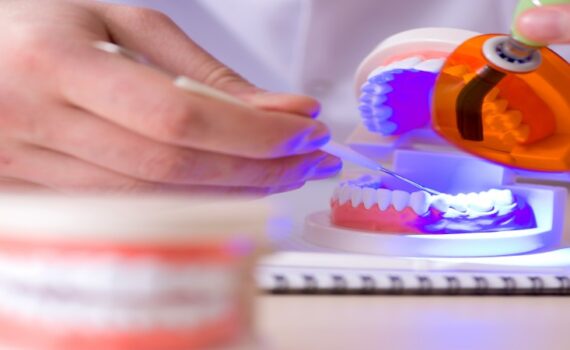
The author of the article
Boris Lipovetskiy, DMD, 31 years experience
Are you wondering what exactly a periodontist is, and what they do? In a nutshell, a periodontist specifically treats the gums, bones, and other structures supporting the teeth. They are different from traditional dentists, who are generalists and address a wide range of dental concerns. Generally, periodontists take charge of more advanced and severe cases that require their specialized knowledge and training. Here is how to determine if you need to visit a periodontist.
What Is a Periodontist?
Periodontists are specialized dentists who focus on the prevention, diagnosis, and treatment of periodontal or gum disease. Besides gum tissue surrounding the teeth, they also deal with the alveolar (jaw bone), cementum, and periodontal ligament. The last two are supporting structures responsible for anchoring and holding the tooth in place in the jaw bone. Periodontists are also knowledgeable about the placement, maintenance, and repair of dental implants.
To become a periodontal specialist, a dentist must undergo extensive training, which includes obtaining three additional years of education beyond dental school. Plus, they need to take a written and oral exam to be certified by the American Board of Periodontology.
Overall, this thorough process gives periodontists the necessary skill and expertise in performing a wide variety of procedures related to gum diseases and dental implants – be it functional, restorative, or even cosmetic in nature. Some of the most common treatments are scaling and root planing (which entails cleaning the infected surface of the roots) and root surface debridement (which involves the removal of damaged tissues).
Related Article: How to Find the Best Miami Cosmetic Dentist to Make Your Teeth Look Great
What Are the Signs That You Need to See a Periodontist?
Periodontal diseases are primarily seen in adults, with a higher prevalence in men than women. In the United States alone, over 47% of adults aged 30 years and above are suffering from some kind of gum disease. Not everyone needs to visit a periodontist, however. That is because a general dentist is more than capable of treating the early stages of gum disease and other related conditions.
But once the disease progresses and reaches a certain point, a trained specialist may need to assess your periodontal health. In more complex cases, a dentist and a periodontist may work in tandem to effectively manage your condition.
How do you know if your gum disease is serious enough to warrant a trip to a periodontist? There are several signs and symptoms to watch out for. You may experience just one or a combination of two or more. If so, make sure to book an appointment with your local periodontist immediately.

Many people experience bad breath or halitosis. While it can be extremely embarrassing, it is not always a cause for concern. Poor oral hygiene is the most common cause of this condition.
With that said, if you practice good dental care and still suffer from persistent bad breath, it might be an indication that you have cavities or visible holes in your teeth. If left unaddressed, they could cause severe, debilitating pain, interfering with your everyday life. In worse cases, the cavity may also advance to tooth loss or abscess.
Make it a habit to regularly inspect your gums when brushing or flossing your teeth. Do they look red and feel swollen and tender? These are usually the first signs of gingivitis (a common type of periodontal disease), and also one of the top reasons to consult a periodontist.
Healthy gums should appear pale pink, feel firm to the touch, and fit firmly around the teeth. However, they may become inflamed and puffy due to plaque and other tartar-causing bacteria. It is important to act promptly. If left untreated, the inflammation could form pockets around the teeth, increasing the likelihood of infection and eventual tooth loss. By visiting a periodontist, you could prevent gingivitis from progressing into periodontitis, which is a more severe form of gum disease.
Related Article: What Causes Gum Disease and How to Prevent or Treat
Swollen, inflamed gums are often accompanied by unexplained bleeding, especially when you eat, brush, or floss. You may notice blood when you spit or your toothbrush may have a pinkish tint after brushing. Again, this may be an early sign that you have a periodontal infection.
Teeth that are starting to loosen up is a common symptom of periodontitis. It is a serious and long-term gum disease that causes irreversible damage to the tissue and bones surrounding the teeth. Without adequate support, your teeth could move and become loose with the slightest touch. You may also experience the loosening of teeth along with other symptoms, such as bad breath, inflamed gums, bleeding, and receding gums. Prompt action is critical to prevent bone deterioration and teeth loss.



